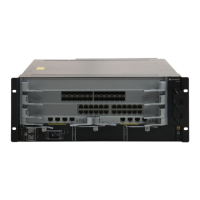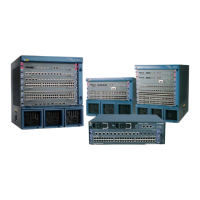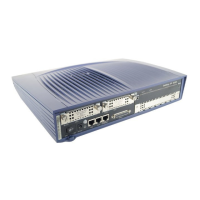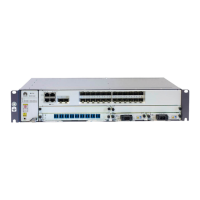By default, no CAR profile is created.
Step 3 Run:
interface interface-type interface-number
The interface view is displayed.
Or, run:
port-group port-group-name
The port group view is displayed.
NOTE
You can configure interface-based traffic policing on Ethernet, GE, XGE, and Eth-Trunk interfaces.
To configure the same CAR profile on multiple interfaces, configure the CAR profile on the port group to
reduce the workload.
You need to create a port group before performing this task. For details on how to create a port group, see
Configuring the Interface Group in the Quidway S7700 Smart Routing Switch Configuration Guide -
Ethernet.
Step 4 Run:
qos car inbound car-name
The CAR profile is applied on an interface.
After a CAR profile is applied on an interface, the S7700 implements traffic policing for all the
service traffic received on the interface.
----End
2.2.3 Configuring Rate Limit on the Management Interface
By configuring traffic policing on the management interface, the S7700 limits the traffic received
from the management interface to improve system performance.
Procedure
Step 1 Run:
system-view
The system view is displayed.
Step 2 Run:
interface Ethernet 0/0/0
The management interface view is displayed.
Step 3 Run:
qos lr pps packets
The rate limit is set.
NOTE
The rate limit of traffic on the management interface cannot be smaller than 100; otherwise, FTP and Telnet
functions are affected.
----End
Quidway S7700 Smart Routing Switch
Configuration Guide - QoS 2 Traffic Policing and Traffic Shaping Configuration
Issue 01 (2011-07-15) Huawei Proprietary and Confidential
Copyright © Huawei Technologies Co., Ltd.
52

